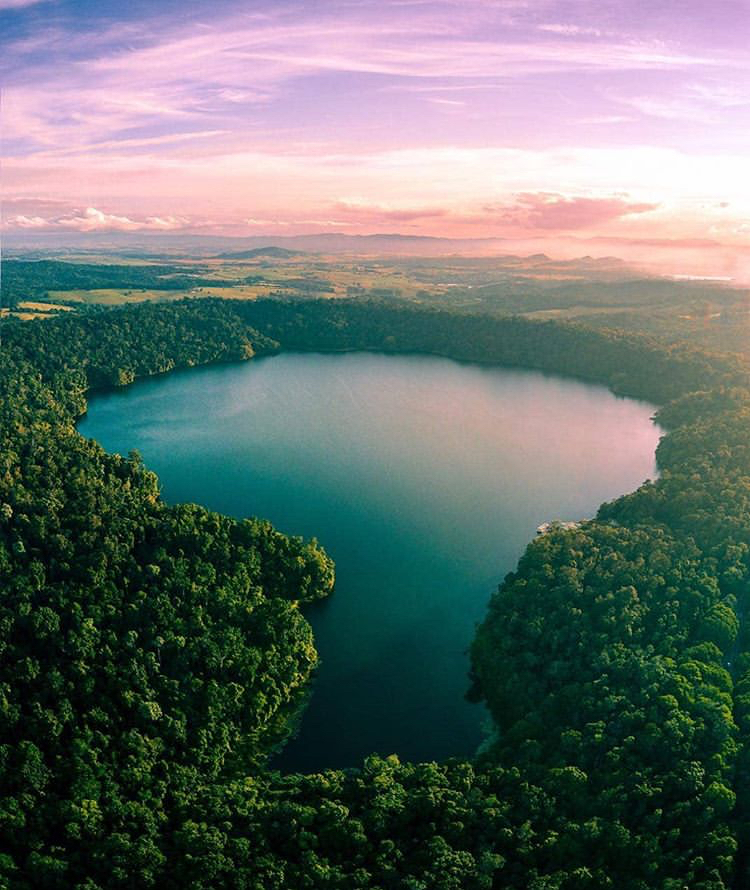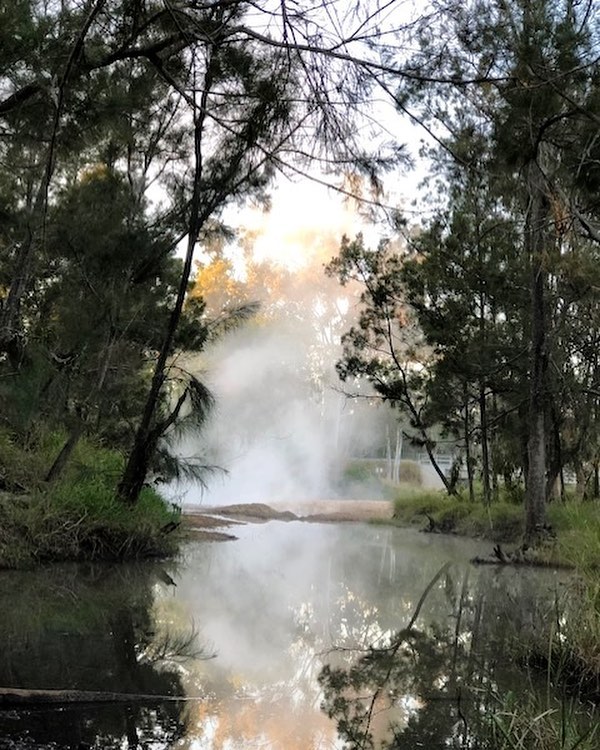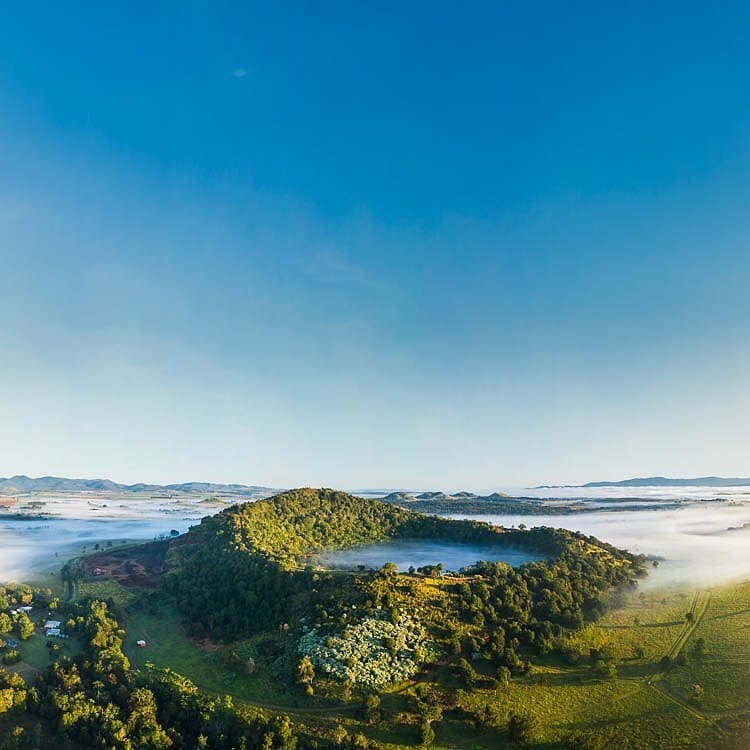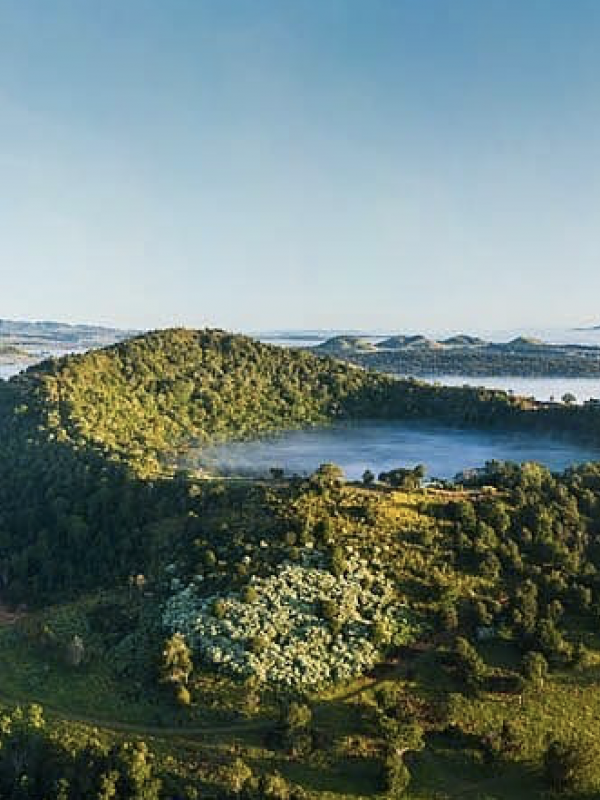The Atherton Tablelands is a treasure trove of geological wonders from underground caverns to volcanic lakes to fossil fields. These are a few of the finds:
Crater lakes
Thousands of years ago the earth got busy creating Lakes Eacham and Barrine. Molten magma broke through to the water table and steam from the super-heated water triggered explosions. After things quietened down a bit, the craters formed by those blasts, filled with water, the trees grew again and over several thousand years, some of the most scenic lagoons in the world were created.

Lake Barrine is a bit older than Lake Eacham at 17,000 years, compared to Eacham’s 10,000. Both are isolated from other water sources so are filled only by rainfall. Both crater lakes are surrounded by Wet Tropics rainforest.
They have different personalities – Lake Barrine has a tea house and a boat cruise while Lake Eacham is popular with swimmers and kayakers. The volcanic crater lakes or maars are now a haven for fish and turtles and both have circuit walking tracks where you might glimpse other wildlife.
Be sure to visit Lake Barrine’s twin kauri trees down a short walking track or take the kids down Lake Eacham’s children’s walk where they can wriggle like a snake or hunt for dragons.
Fossil fields
Coral reefs are found not only out to sea in Tropical North Queensland.
Have a good fossick round the Chillagoe area out west and you will find an ancient seabed with its own fossilised coral reef. There’s plenty of marine life to discover in rock as well as dinosaur remains. The best ever skeleton of the marine reptile Elasmosaurus was found in the region in 1999 and a replica is on display in the town. People have also found the ancient skeletons of the marsupial lion, Tasmanian Tiger and long faced kangaroo – there’s a joke in there somewhere.
If finding bling is your happy place – there’s plenty to be discovered in this prehistoric playground. There are garnet and topaz and more unusual semi-precious stones including chalcedony, azurite, jasper to be uncovered. There are no designated fields but check in at the information centre in Chillagoe for details about where to go.

Lava tubes
Once upon a time – say nearly 200,000 years ago – blistering hot molten lava escaped a volcano on the Atherton Tablelands and poured out into the countryside. The scorching basalt tubes cooled on the outside while staying hot inside and moving on.
The resultant caves and tunnels, known as the Undara Lava Tubes are some of the longest in the world and a spectacular experience. The tubes lie under woodlands and savannah and vegetation grows at the mouths of many of the tubes. You need to visit with a guide – the crumbling structure and occasional high carbon dioxide levels make this no place to explore alone. Some of the caves have large colonies of micro bats, which are sight to see leaving in the evening to feed.
Undara itself means ‘long way’, a reference to how far these fingers of fire stretched out into the countryside. Stay at Undara Experience or near Ravenshoe, Mount Surprise or Mount Garnet.
Caves
Staying on the underground, the Chillagoe cave system is an absorbing and adventurous encounter with more than 400 million years of subterannean development.
Visitors can explore Donna, Trezkinn and Royal Arch caves on ranger-guided cave tours, which run daily except Christmas Day. There are other caves you can explore on your own in Chillagoe-Mungana Caves National Park.
The area was once a shallow inland sea that retreated, exposing coral and reefs, rocky outcrops and more than 600 caves. The massive caverns include stalactites and stalagmites and other otherworldly limestone formations. They are well lit and easy to walk through on constructed paths.
Top tip – go on a ranger tour to get the most out of your visit.
Hot Springs
If you are tired from all the Indiana Jones stuff, there’s a place to kick back and go ahhhh. Innot Hot Springs is an oasis of relaxation with water piped from nearby Nettle Creek where the mineral springs bubble from.

There is a chain of pools in ascending order of hotness and a plunge pool to cool off in. You can also get your hot-spring soak in the actual creek but be careful, some spots are scorching hot – up to 75 degC.
Craters
Volcanic craters are common on the Atherton Tablelands and some have become lakes – Eacham and Barrine – while others exist inside extinct volcanoes or are huge diatreme or volcanic pipes.
The latter, Mount Hypipamee Crater is 61 metres across and 82 metres deep and can be viewed from a cool look out point after short walk on a sealed track. This deep, cylindrical volcanic pipe and its sheer granite walks with a lake at the bottom is a beautiful destination.
A visit to Mount Hypipamee National park should also include Dinner Falls, a small but perfectly formed waterfall at the headwaters of the Barron River. The mountain and rainforest circuit walk are well worth the effort with towering mountains and rugged rainforest.

Mount Quincan pops out of the Atherton Tablelands near Yungaburra. This extinct volcano is one of several cinder cones in the region and has a crater about half a kilometre across. Keep an eye out for their distinct, extinct shapes.

